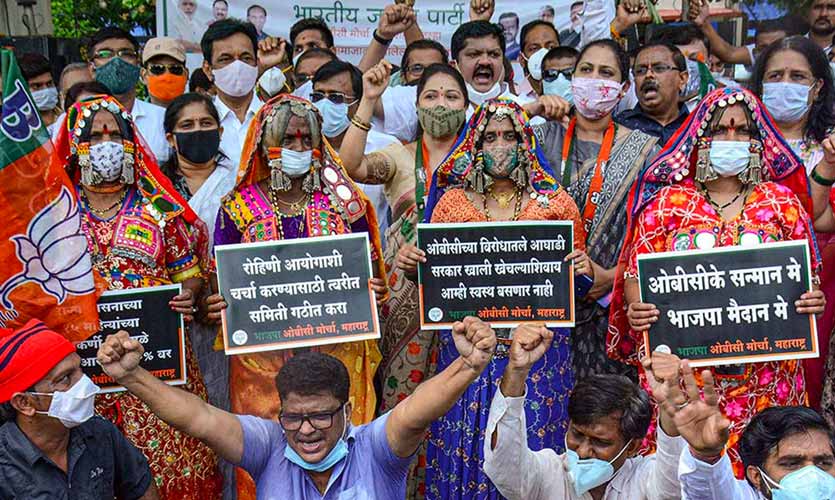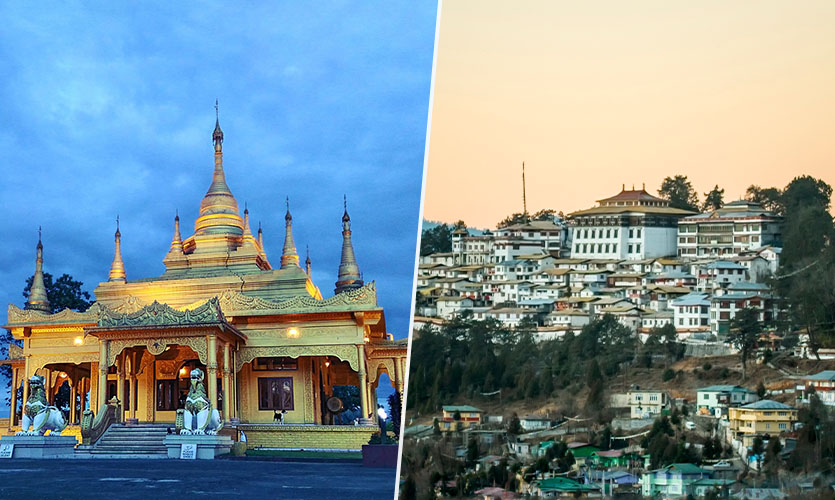Bihar Chief Minister Nitish Kumar-led cross-party delegation met Prime Minister Narendra Modi on Monday, to discuss the caste-based census. The meeting took place in New Delhi, where a total of 11 leaders from different political parties, mainly from Bihar, were present. The leaders urged the PM to take an appropriate decision. Nitish Kumar, who has mobilised political leaders for carrying out the caste census in India said that Bihar and the entire country have the same opinion on this issue.
Data gathering for Census 2021 was supposed to begin in February this year, but was postponed due to the COVID-19 pandemic. The various political parties of the country, including BJP’s allies, are demanding a caste-based census. They believe that it is in national interest and would help in policymaking.
Experts argue that it would help to identify the actual beneficiaries of the government policies, including reservation. Moreover, it is the citizen’s right to know the harsh realities of caste in Indian society.
Many analysts say that there is nothing wrong in collecting caste data, and that it will not divide society. Some have also argued using the example of the US collecting data for its census, which includes people of white, black, Asian, Asian American, African American, and Hispanic backgrounds.
The ruling government has already clarified its stand that a caste-based census will not happen. On August 11, the Centre told the Parliament that it will not collect data for a caste census, as data is collected based on demographic and various socio-economic parameters.
Why are political parties demanding a caste based census? Why does the Narendra Modi-led BJP government seem unwilling to reveal the enumeration of castes, particularly the OBCs (Other Backward Classes)?
What Is Caste Census?
Historically, India has carried out a census exercise every ten years. However, the last time a caste-based census was carried out in India was during British rule in 1931. In 1941, the census could not take place due to a lack of funds because of World War II. The British government was not opposed to the caste census. The data for Census of India, post-independence, includes statistics based on religions, languages, categories (except OBCs), Dalits, Adivasis, and people’s socio-economic status in the society. All castes other than the Scheduled Castes and Scheduled Tribes, are marked in the General category during the census.
Why Are Political Parties Demanding A Caste Census?
The demand for a caste-based census in India is not new. It has been demanded by both the regional and national political parties over many years. In 2010, the then union law minister, M. Veerappa Moily wrote a letter to the then PM Manmohan Singh in the favour of conducting a caste-based census. He had pointed out that this would help in bringing “authentic” and fresh data on backward classes in the country to light.
While political parties have repeatedly said that accurate data on the OBCs would help in knowing their socio-economic status and real beneficiaries of government policies, experts believe that caste data will provide a new vote bank ground for them. It could also help regional political parties to shift their focus on the socio-economic deprived sections among the OBCs to mobilise their votes.
Senior politician and lawmaker, Sharad Yadav said in an article that discontinuing the caste-based census was a bad idea. He observes, “India was divided because of religion, not because of caste, but the religion census continued. If you are interested in knowing the figures related to religion, which proved to be divisive, why are you not interested in knowing the figures of caste?”
Yadav further pointed out that the country wants to fight against the caste system, but without the accurate data of jaatis. “Caste based reservation is the single measure which nails this caste system,” he wrote.
Politics Behind The Caste Census
There is a legitimate concern that the caste-based data could be potentially abused for petty vote bank politics, and a huge number of votes could be shifted from one party to the other. Most of the political parties in India focus on castes to gain votes during polls.
There are hundreds of castes that come under the OBC, which account for more than 40 percent of the country’s total population.
BJP has its stronghold on the OBC vote share, and it took a lot of time for the party to strengthen its grip among the upper-middle-class society in Indian electoral politics under the leadership of the Vajpayee-Advani duo. According to data, the BJP has been able to mobilise the OBC vote share successfully over the past two decades. According to CSDS data, BJP’s OBC vote share was just 19 percent in the 1996 poll, which increased to 23 percent in 2004. But in 2009, it decreased to 22 percent.
In 2014, BJP saw a huge jump in its OBC vote share – reportedly gaining 34 percent of the total OBC votes. In 2019, the party earned 44 percent of the total OBC votes, proving its tremendous popularity under the leadership of Narendra Modi.
But this only warrants the BJP’s performance in Lok Sabha elections, in terms of mobilising OBC votes in its fold. Regional parties are more popular than the BJP among OBC voters when it comes to choosing a state government, particularly in Bihar, Jharkhand, Odisha, West Bengal, and the north-eastern states.
Rasheed Kidwai, a political analyst and senior journalist has said that caste-based data will change the entire political scenario, especially in the Hindi-speaking heartland where regional parties are more focused on castes. According to him, it could end the influence of the upper caste votes among political parties. The higher number of castes in a particular state could get more importance from political parties, while the parties may also face pressure from the same castes to fulfil their demands.
Read more: 2022 Uttarakhand Assembly Election: Candidates, Motives And Promises So Far
The Reservation Factor
Many believe that caste data could lead to Mandal 2.0, and could give a big blow to parties like the BJP. Sanjay Kumar, who is a professor at the Centre for the Study of Developing Societies (CSDS) and a political analyst, says that caste data would give a new agenda to regional parties to reshape the OBC reservation system. The ruling government could come under pressure from regional parties to increase the OBC quota in central government jobs and educational institutions.










